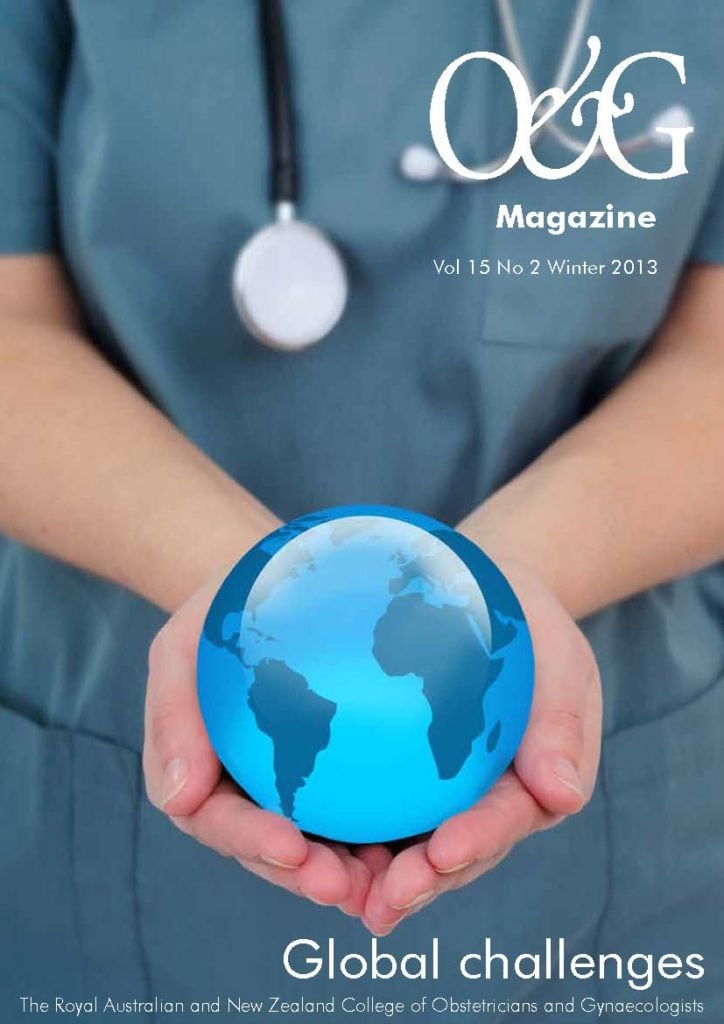Many of my private obstetric patients, and indeed their partners, share their concerns with me during the course of antenatal care. Particularly during a first pregnancy, women have understandable worries about the safety of their babies and their own well-being during delivery. In reality, though, the women I care for are in a better position than 95 per cent of other women on the planet. There is no safer place to have a baby, or to be born. Most of my patients have a loving family, carry no burden of chronic disease and have access to some of the best health facilities available. Perhaps this can allay their fears a little.
How different the situation is only a short flight from Australia or New Zealand. Many midwives and doctors in our countries will never see awoman die in labour; for our colleagues in the region, such tragedies occur all too commonly. If you look around the typical primary school classroom in Papua New Guinea, for example, it is likely you will see the face of a girl who will die in pregnancy. This thought continues to horrify me.
Last year, the Public Health Association of Australia (PHAA) published its policy on maternal health in Asia.1 The document summary states:
Maternal mortality continues to be a major challenge to global health systems. The vast majority of maternal deaths are preventable. Maternal mortality is impacted by the social determinants of health: poverty, education, employment, access to health care, health status and gender inequality. Australia is wellpositioned to take a leadership role in tackling these issues.
These few sentences encapsulate the appalling situation facing millions of women who live in our region. It is likely that for every woman who dies, perhaps 20 women suffer a long-term adverse outcome of birth – prolapse, infertility, obstetric fistula and/or incontinence. At the heart of this tragedy is the terrible fact that most of the long-term health problems and deaths related to pregnancy are preventable.
In this issue of O&G Magazine we focus on the challenges faced by women who live in the Asia-Pacific region, and the challenges encountered by those trying to help. You will find articles offering an overview of the problems, information about organisations working towards change and some stories from the frontlines from people trying their best to change the lives of women and families in our region.
It is not lost on us that our College is ideally placed to lead efforts in dealing with health injustice for women in the Asia-Pacific region. Former RANZCOG President Dr Kenneth Clark elaborates on this point in these pages. The PHAA document1 lists the key steps in helping improve conditions for women, and I summarise them here. Strengthen links with like-minded associations in the region, and with grass-roots organisations based in those countries. Lobby the governments of our countries, and provide leadership in eradicating violence against women. Advocate for the provision of family planning, skilled birth attendants at all deliveries and emergency obstetric care whenever it is required. Assist in strengthening and retaining the women’s health workforce in the region. Aim for accurate and useful data collections, and hold the Government to account for effective development assistance that reaches its targets.
The team behind O&G Magazine believes that no other organisation across our region is better placed to help. Our College motto translates to: out of the darkness and into the light of life. There is no greater need for an escape than from the darkness that binds so many of the women in our neighbouring countries. We hope the stories in these pages inspire everyone who reads them.
References
- Public Health Association of Australia. Policy-at-a-glance: Maternal mortality, social determinants of health, millennium development goals in Asia policy, 2012. (www.phaa.net.au).






Leave a Reply